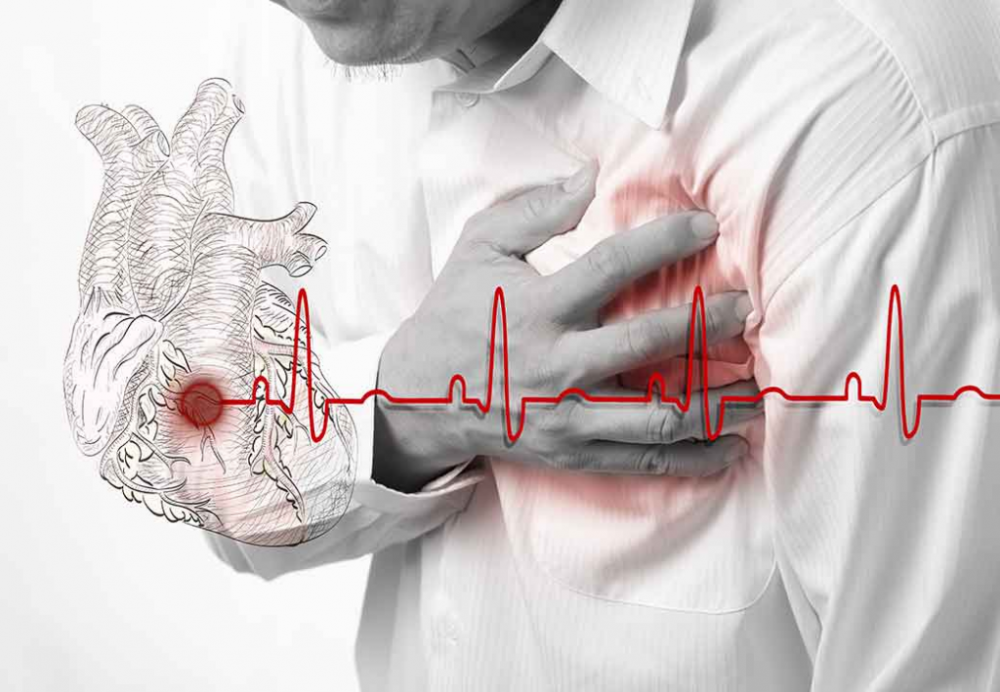Prevention of Coronary Heart Disease (CHD)
Ischemic heart disease (IHD) is a disease caused by a mismatch between myocardial oxygen demand and delivery, resulting in cardiac dysfunction. IHD is a clinical and pathophysiological concept denoting a reduced ability to provide blood flow through the coronary arteries of the heart to the myocardium in accordance with its needs for oxygen and nutrients. The main cause of coronary heart disease is atherosclerosis (95-98% of all cases), which develops due to the accumulation of cholesterol in the arteries. All over the world, prevention of cardiovascular diseases is of paramount importance and an urgent public health problem.
IHD risk factors are divided into modifiable (modifiable) and non-modifiable (constant, non-modifiable). Non-modifiable risk factors: age, sex and family history of CHD. Modifiable risk factors are categorized into: lifestyle and social, biological and environmental factors. Lifestyle and social factors: unhealthy diet, smoking, alcohol, hypodynamia, low social and educational status. Biological factors: hypertension, dyslipidemia, hyperinsulinemia, hyperglycemia, hyperurecemia, thrombogenic factors.
Disease prevention is a system of medical and non-medical measures aimed at preventing, reducing the risk of health deviations and diseases, slowing down and preventing their progression, reducing their adverse effects. Measures of prevention, depending on the stage at which they are implemented, are divided into primary, secondary and tertiary.
Primary prevention of CHD consists in carrying out special measures before its appearance (impact on risk factors to slow down the progression of atherosclerotic process). Primary prevention is aimed at correction of behavioral risk factors of IHD: low physical activity, excessive consumption of table salt, foods rich in animal fats, smoking, alcohol abuse, psycho-emotional stress. Secondary prevention of IBS in the presence of existing disease to prevent the progression of the disease and prevent subsequent complications. Secondary prevention is aimed at slowing the progression of the disease and reducing the risk of complications through the use of both medication and non-medication treatment methods. Currently, secondary prevention of CHD prevails, as primary prevention requires the implementation of state policy on healthy lifestyle and the formation of appropriate attitudes to their health.
Secondary prevention in a patient with CHD consists of lifestyle changes, impact on risk factors and use of medications. Tertiary prevention of CHD is aimed at adaptation of the patient to the disease, preventing the development of life activity limitations. For this purpose, along with medication and non-medication, medical, social and professional rehabilitation of patients is carried out. Non-drug treatment should be recommended to all patients with CHD, including those who need drug therapy. All patients are recommended to change their lifestyle: increase physical activity with regular exercise, complete cessation of smoking in any form (cigarettes, nasvay, etc.), get rid of excess weight, limit alcohol consumption, reduce the intake of foods containing saturated fatty acids, increase fruit and vegetable intake, reduce salt intake.
The following physical exercises are recommended: brisk walking, jogging, swimming, cycling and skiing, tennis, volleyball, dancing with aerobic exercise. In this case, the heart rate should be no more than 60-70% of the maximum for this age. Duration of exercise should be 20-30 minutes: 5-10 minutes warm-up, 20-30 minutes aerobic phase, 5-10 minutes final phase. Regularity 3 -5 times a week (in case of longer exercise - 2-3 times a week). Nutrition is one of the most powerful factors of influence on the human body, which acts on it constantly, throughout its life. Healthy diet from the point of view of cardiovascular prevention is a diet that should prevent the emergence and progression of alimentary-dependent risk factors of cardiovascular diseases. In CHD, the diet is aimed at: normalization of body weight, reduction of lipid levels, improvement of water and salt metabolism, strengthening of vascular walls, improvement of heart activity and prevention of diabetes mellitus.
translated Ismoilov R.

